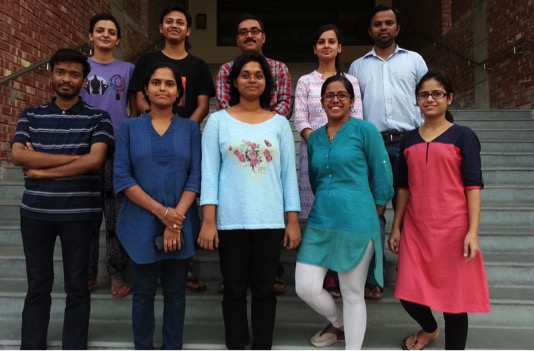Research summary
Structure-Function Studies on Pore-Forming Protein Toxins
Pore-forming protein toxins (PFTs) represent a special class of membrane damaging cytolytic proteins, and they are found in wide spectrum of organisms ranging from bacteria to humans. They exert their toxic effects by punching ‘holes’ into target cell membrane, thus destroying the natural permeability barrier function of the cell membrane. PFTs are, in general, synthesized as water-soluble molecules, and in contact with target cell membranes they form membrane-inserted pores. However, in spite of sharing this overall general scheme, PFTs differ significantly from each other in the intricate details of their pore formation mechanisms. A major mechanistic challenge associated with the membrane pore formation process by PFTs is elucidating the folding pathways that ensure thermodynamic compatibility of the water-soluble and the membrane-inserted form of the toxin with aqueous and membrane lipid milieu, respectively. One of the major research interests of my group is focused on studying structure-function relationship of some of the prominent bacterial PFTs. The critical issues we address are:
- Mechanistic details of membrane channel formation by PFTs.
- Mechanism(s) associated with cellular responses triggered by PFTs.
Visit group page for more information: Kausik group page
Selected Publications
- Rai, A. K.*, Paul, K.* and Chattopadhyay,K. (2013) Functional mapping of the lectin activity site on the β-Prism domain of Vibrio cholerae cytolysin: implications for the membrane pore-formation mechanism of the toxin. J. Biol. Chem, 288 (3), 1665-1673. (*These authors contributed equally to this work).
- Paul, K. and Chattopadhyay,K. (2012) Single point mutation in Vibrio cholerae cytolysin compromises membrane pore-formation mechanism of the toxin. FEBSJournal, 279 (21), 4039-4051.
- Paul, K. and Chattopadhyay,K. (2011) Unfolding distinguishes the Vibrio cholerae cytolysin precursor from the mature form of the toxin. Biochemistry, 50 (19), 3936-3945.
- Chattopadhyay,K., Ramagopal, U. A., Nathenson, S. G., and Almo S. C. (2009) 1.8 A structure of murine GITRL dimer expressed in Drosophila melanogaster S2 cells. ActaCrystallographyD.Biol.Crystallogr. D65. 434-439.
- Chattopadhyay,K., Lazar-Molnar, E., Yan, Q., Rubinstein, R., Zhan, C., Vigdorovich, V., Ramagopal, U. A., Bonanno, J., Nathenson, S. G., and Almo, S. C. (2009) Sequence structure function and immunity: structural genomics of costimulation. ImmunologicalReviews, volume 229, issue 1, 356-386.
- Chattopadhyay,K., Ramagopal, U. A., Brenowitz, M., Nathenson, S. G., and Almo S. C. (2008) Evolution of GITRL immune function: murine GITRL exhibits unique structural and biochemical properties within the TNF superfamily. Proc.Natl.Acad.Sci.USA, 105. 635-640. (This article was selected in the Editor’s Choice section of Science Signaling).
- Chattopadhyay,K., Ramagopal, U. A., Mukhopadhaya, A., Malashkevich, V. N., DiLorenzo, T. P., Brenowitz, M., Nathenson, S. G., and Almo, S. C. (2007) Assembly and structural properties of glucocorticoid-induced TNF receptor ligand: implications for function. Proc.Natl. Acad.Sci.USA, 104. 19452- 19457.
- Chattopadhyay,K., Bhatia, S., Fiser, A., Almo, S. C., and Nathenson, S. G. (2006) Structural basis of inducible costimulator ligand costimulatory function: determination of the cell surface oligomeric state and functional mapping of the receptor binding site of the protein. J.Immunol. 177, 3920-3929.
- Chattopadhyay,K. and Banerjee, K. K. (2003) Unfolding of Vibrio cholerae hemolysin induces oligomerization of the toxin monomer. J.Biol.Chem. 278, 38470-38475.
- Chattopadhyay,K., Bhattacharyya, D., and Banerjee, K. K. (2002) Vibrio cholerae hemolysin: implication of amphiphilicity and lipid-induced conformational change for its pore-forming activity. Eur.J.Biochem. 269, 4351- 4358.


